It can be hard to keep up with food trends, I know! One minute the media tells you that eating bacon and eggs everyday is totally cool, then the word “superfood” starts bouncing around, next you’re wondering how acai is different from any other berry and how kale went from buffet decoration to salad staple.
I’m right there with you. It gets overwhelming trying to follow advice from so many credentialled and well-intentioned authorities out there. If you were hoping that this article would make things more simple for you, I apologize. I’m about to throw something else on your plate, and it’s alive!
In your quest for health, considering fermented foods is a must. Fermented foods are a diet staple of health experts like Kris Carr and David Wolfe. And this is no new fad. Sources vary on the exact time, but the first fermented foods showed up sometime during the Neolithic era (which makes sense because this is when people were moving toward a more sedentary, farming lifestyle.)
Practically every food culture includes a fermented food. Koreans have Kimchi, Germans eat sauerkraut, and Kefir comes from Eastern Europe and the Middle East.
So what exactly is fermentation and why are these foods an important part of so many cultures?
What is Fermentation?
Fermentation is what happens as yeast, bacteria, and other little critters break down food compounds into smaller components, sometimes producing alcohols along the way. Through this action, they are doing some of the work for us, making our foods easier to digest.
The 100 trillion bacteria that live in your belly are imperative to your digestion. And if the gravity of the situation wasn’t weighty enough, your gut health is now known to be linked to the health of your immune, endocrine, circulatory and central nervous systems. An imbalance in our gut flora causes them to release toxins that make your gut more permeable (think leaky gut syndrome). When these toxins enter your bloodstream, they cause inflammation, the root of a myriad of health problems.
Health practitioners and nutrition experts are now showing that you can heal serious illnesses by healing your gut. Dr. Natasha Campbell-McBride developed a protocol called GAPS (Gut and Psychology Syndrome/Gut and Physiology Syndrome) through which she has been able to heal cases of autism, epilepsy, mood disorders, arthritis, multiple sclerosis, celiac disease, and tons more.
Inflammation and Disease
It's thought that many of the above-mentioned conditions are being related to our genetics, but Campbell-McBride is showing that gut health is at least part of the underlying cause. This inflammation in our bodies, this inability to digest certain foods all comes down to how healthy our gut flora is.
So why is our gut flora unhealthy?
- Sugar makes our gut flora go crazy.
- Processed foods – For example, the way we make bread today does not promote good gut health. This is very apparent in the number of people who are now suffering from gluten-intolerances. The traditional process of making bread involved a fermentation, rather than a dry yeast. This slower fermentation resulted in bread with less hard-to-digest gluten.
- Taking antibiotics, though sometimes necessary, wipes out bacteria in your body, both good and bad. Stress also takes its toll on these little buggers. Such divas, I know! But we owe it to our flora to nourish them; they do a lot of work for us!
Eating whole, plant-based foods is a good place to start repairing your gut. Incorporating fermented foods into your diet will also boost this process, because you’ll be adding good bacteria back into your gut. You’ll get the most benefits if you choose raw, organic, unpasteurized fermented products. And be aware, pickles that you see in most stores are not made through fermentation, but rather by soaking the vegetables in vinegar. This does a good job of imitating that sour taste, but you’re not getting any of the benefits.
Here are a couple delicious recipes for you to enjoy!
(Instructions are combined at the bottom since they're similar!)
Dilly Dulse Kraut
- 4 lb green cabbage (about 3 medium heads of cabbages
- 2 cups water
- 1⁄4 cup fresh squeezed lemon juice
- 2 large dates, soaked in water for 15 minutes and pitted 2 cloves garlic, core removed (optional)
- 1 packet of Body Ecology culture starter or 1 cup sauerkraut from your last batch
- 3 oz. dried whole dulse, broken into 2 inch pieces
- 1 bunch of fresh dill or 1 Tbsp. dill seed
Scarlet Cultured Vegetables
- 2 lb green cabbage
- 1 1⁄2 lb red cabbage
- 2 medium beets, shredded
- 3 stalks celery, thinly sliced
- 2 cups water 1⁄4 cup
- fresh squeezed lemon juice
- 2 large dates, soaked in water for 15 minutes, pitted
- 1 packet of Body Ecology culture starter or 1 cup sauerkraut from your last batch
- 3 tbsp paprika
- 2 tsp Himalayan salt or 3 oz. dried whole dulse
- 1 tbsp anise seed
Yield: Each recipe makes 1 gallon
Pour 2 cups of warm water in high-speed blender with the dates and garlic (Dilly Dulse Kraut). Run on high speed until liquified. Add 1 package of Body Ecology culture starter and pulse to mix. Let this mixture sit for 20 minutes while you prepare the cabbage.
Remove two to three outer leaves of one of the cabbages and set aside. Finely shred the remaining cabbages in food processor with shredding attachment or ‘S blade' or chop by hand.
Scarlet Cultured Vegetables: Put 4 cups of the shredded cabbage, garlic, sea salt and dates in a high-speed blender and cover with fresh, filtered water. Run on high until liquified.
Dilly Dulse Kraut: Put 4 cups of the shredded cabbage and lemon juice in a high-speed blender and cover with fresh, filtered water. Run on high until liquified.
Combine the two mixtures together with the remaining ingredients in a large bowl and pack it down with your fists or with a potato masher. After packing it down, ensure that there is 1⁄2 inch of liquid brine on top. If more brine is necessary to reach that level, blend some of the veggies from the bowl with additional water in the blender and add this to the veggies until you see 1⁄2 inch of liquid above the vegetables after packing it down.
Spoon this mixture into a Harsch crock or a one-gallon glass jar, leaving about two inches at the top. Pack the veggies down into the container with your fists.
If using the Harsch crock, place the stone weights on top to keep it submerged. It will cause the juice to rise over the veggies if enough brine was made in the first step above. If you don’t see 1⁄2 inch of liquid over the veggies, make a little more brine. Place the water seal lid on the crock and fill the groove around the lid with water to complete the seal. Be sure to check the crock every few days and add water to the groove if necessary.
If using 1 gallon jars, place your “homemade” weight on top of the veggies to keep it submerged. This weight could be a flat rock or a glass jar that fits into the mouth of your 1-gallon jar. You will need to fill this small glass jar with water to get the proper weight. Make sure the veggies are submerged in 1⁄2 inch of liquid. Cover it with a clean cotton cloth or towel secured with rubber bands. This keeps out harmful bacteria or unwanted guests from the insect world.
Allow the veggie mixture to sit in a 72-85 degrees Fahrenheit area for 3-7 days. If your house is cold, you can wrap the jars in towels and place in a warm spot in the house. A good location would be near the water heater or on top of the refrigerator. If it is colder than 55 degrees, it may never ferment. Start tasting it after 3 days to see if it is to your liking. When it is the way you like, store in refrigerator. It will continue to ferment very slowly. It will usually keep well for 3 months or longer when refrigerated.
Contributed by René Oswald. From Cultured: Make Healthy Fermented Foods at Home.
(reneoswald.com or rawfoodrene.com)
By Hope Freije
Sources:
http://www.ancient.eu.com/Neolithic_Period/
http://ourworld.unu.edu/en/benefits-of-traditional-fermented-foods
http://www.biology-online.org/dictionary/Fermentation
http://www.foodmatters.tv/articles-1/turn-ordinary-vegetables-into-immunity-boosters-with-this-simple-trick
http://kriscarr.com/blog-video/how-to-improve-your-gut-health/
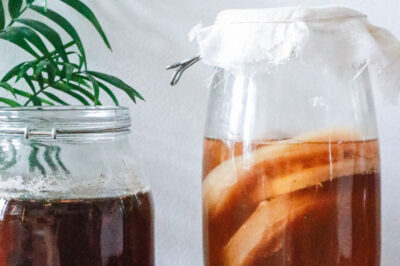


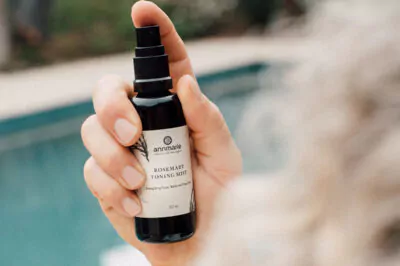
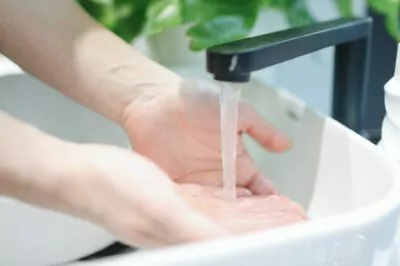
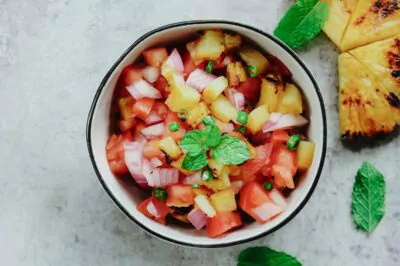
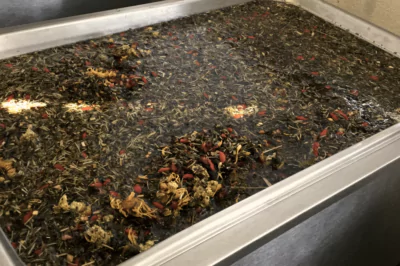

Leave a Reply